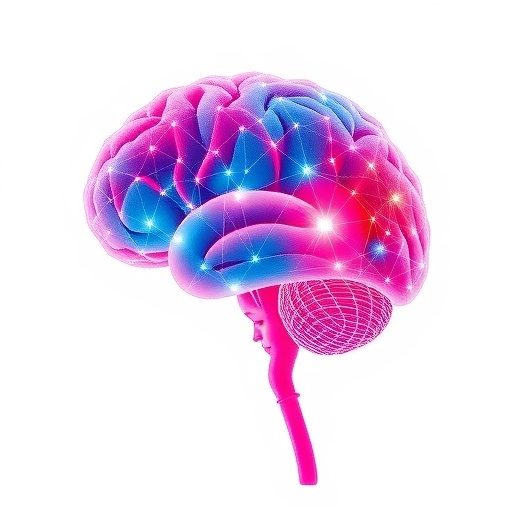The complex and debilitating effects of Parkinson’s disease (PD) have long challenged both clinicians and researchers seeking effective therapeutic interventions. In a groundbreaking study recently published in npj Parkinson’s Disease, Liu, Yang, Wang, and colleagues explore the nuanced impacts of two distinct repetitive transcranial magnetic stimulation (rTMS) protocols on the brain network dynamics of patients suffering from PD. This pioneering work marks a significant stride in understanding how non-invasive neuromodulation techniques may recalibrate pathological neural circuits, potentially paving the way for novel, targeted treatment approaches.
Repetitive transcranial magnetic stimulation is an innovative non-invasive brain stimulation technique that modulates neural activity by delivering magnetic pulses to specific brain regions. In PD, rTMS has attracted considerable interest due to its potential to modulate dysfunctional motor and prefrontal circuits without the side effects associated with pharmacological treatments. The precise mechanisms by which different rTMS protocols influence brain network connectivity in Parkinson’s disease, however, remain incompletely understood, necessitating detailed explorations such as those conducted by Liu and colleagues.
.adsslot_c5XUfJYDdR{ width:728px !important; height:90px !important; }
@media (max-width:1199px) { .adsslot_c5XUfJYDdR{ width:468px !important; height:60px !important; } }
@media (max-width:767px) { .adsslot_c5XUfJYDdR{ width:320px !important; height:50px !important; } }
ADVERTISEMENT
In their study, the researchers meticulously compared two rTMS protocols—high-frequency stimulation, typically considered excitatory, and low-frequency stimulation, often regarded as inhibitory—to discern their differential impacts on the brain’s functional connectivity in PD patients. Employing advanced neuroimaging techniques integrated with sophisticated network analysis, the study provides rich insights into how these modalities modulate the altered brain networks characteristic of Parkinson’s pathology. What emerges from their data is a compelling narrative of neural plasticity and potential therapeutic recalibration.
The brain network disruptions in PD extend beyond the striatum and basal ganglia to include altered connectivity within the motor cortex, prefrontal areas, and limbic system. These disruptions correlate with the severity and type of symptoms manifested. Thus, interventions that can restore or enhance the integrity of these networks hold significant promise. By carefully targeting the motor cortex and associated regions with rTMS, the study unveils a pathway to ameliorate motor deficits by reestablishing functional synchronization across disturbed networks.
Notably, Liu et al. observed that high-frequency rTMS resulted in increased connectivity within motor-related circuits, suggesting an enhancement of excitatory neurotransmission and synaptic efficacy. This effect aligns with previous findings that high-frequency stimulation can potentiate cortical excitability. Conversely, low-frequency rTMS demonstrated a modulatory effect on prefrontal and limbic areas, seemingly normalizing aberrant hyperactivity and potentially benefiting cognitive and neuropsychiatric symptoms frequently comorbid with Parkinson’s disease.
The complexity of these findings highlights the bidirectional nature of brain network modulation in PD. It suggests that tailored rTMS protocols could be designed to target specific symptom domains—motor versus cognitive or emotional—by capitalizing on the differential influence of stimulation frequency. Such a personalized neuromodulation approach would represent a paradigm shift from the one-size-fits-all treatments currently dominant in PD management.
Moreover, the study’s integration of graph theoretical analysis offers a quantitative framework to assess brain network topology changes induced by rTMS. Metrics such as clustering coefficient, path length, and centrality elucidate how focal perturbations can reverberate through large-scale networks, either fragmenting or consolidating connectivity patterns. These network-level insights provide a robust platform for future translational research, emphasizing the importance of systems neuroscience in clinical interventions.
Beyond symptomatic relief, rTMS could theoretically influence disease progression by fostering neuroplasticity. The observed normalization of aberrant network connectivity may reflect synaptic remodeling and strengthening of compensatory circuits. This neuroplastic potential is especially significant given the progressive and currently irreversible nature of dopaminergic neuron loss in PD, opening the door to interventions that might decelerate functional decline or even promote adaptive reorganization.
Clinical translation of these findings is facilitated by the non-invasive nature, relative safety, and accessibility of rTMS. However, challenges remain, including optimizing stimulation parameters (frequency, intensity, duration), determining the ideal cortical targets, and understanding long-term effects. Liu and colleagues’ study contributes critical data toward these goals, underpinning the design of clinical trials aimed at refining rTMS protocols for maximum efficacy in PD.
Furthermore, the differential effects on motor and non-motor networks underscore the multifaceted nature of Parkinson’s disease and the necessity for multi-target approaches. The interplay of motor symptoms with cognitive and emotional disturbances demands comprehensive treatment strategies. rTMS offers a rare opportunity to concurrently modulate disparate brain systems, potentially harmonizing network activity across symptom domains.
The authors also emphasize the importance of individualized treatment planning informed by baseline neuroimaging profiles. Identifying patients with specific patterns of network disruption may predict responsiveness to either high- or low-frequency rTMS, thereby enhancing therapeutic precision. This personalized medicine framework aligns with broader trends in neurology and psychiatry, wherein biomarker-driven interventions strive to improve outcomes and minimize adverse effects.
From a research perspective, the study advocates for longitudinal designs to track the durability of rTMS-induced network changes and symptom improvements. Understanding the temporal dynamics of brain plasticity in response to stimulation will inform maintenance strategies and potential combination therapies. Integrating rTMS with pharmacological agents or rehabilitative exercises could amplify benefits and promote sustained functional recovery.
Critical to the success of such interventions is patient adherence and tolerability. The low side-effect profile of rTMS, coupled with the prospect of home-based or portable devices, suggests scalability and accessibility. However, regulatory hurdles and the need for trained personnel to administer and monitor treatments remain barriers. Collaborative efforts among clinicians, researchers, and industry are essential to translate these promising findings into widespread clinical practice.
In conclusion, Liu, Yang, Wang, and their team have provided compelling evidence that repetitive transcranial magnetic stimulation—administered at distinct frequencies—can differentially modulate brain network connectivity in Parkinson’s disease. Their findings illuminate new avenues for targeted neuromodulation, with the potential to improve motor and cognitive symptoms and perhaps influence disease trajectory. This study represents a notable advancement in harnessing neuroplasticity as a therapeutic asset, underscoring the transformative possibilities of rTMS in managing neurodegenerative disorders.
As Parkinson’s disease continues to afflict millions worldwide, innovations such as these bring hope for improved quality of life and functional independence. Future research will undoubtedly refine these approaches, integrating multimodal therapies with personalized medicine to confront the multifaceted challenges posed by PD. The work by Liu and colleagues not only deepens scientific understanding but also charts a course toward more effective, patient-centered care.
Subject of Research: Effects of different protocols of repetitive transcranial magnetic stimulation on brain network connectivity in Parkinson’s disease
Article Title: Effects of two types of repetitive transcranial magnetic stimulation on brain network in Parkinson’s disease
Article References:
Liu, S., Yang, S., Wang, C. et al. Effects of two types of repetitive transcranial magnetic stimulation on brain network in Parkinson’s disease. npj Parkinsons Dis. 11, 191 (2025). https://doi.org/10.1038/s41531-025-01054-4
Image Credits: AI Generated
Tags: alternative strategies for PD managementbrain network dynamics in PDcortical and subcortical dysfunctiondopaminergic neuron degenerationmotor symptoms of Parkinson’s diseaseneural circuit recalibrationnon-invasive brain stimulation techniquesnovel treatment approaches for PDParkinson’s disease treatmentrepetitive transcranial magnetic stimulationrTMS protocols and efficacytherapeutic interventions for Parkinson’s





